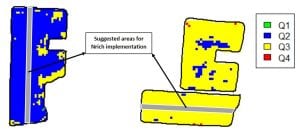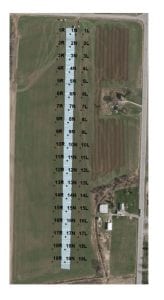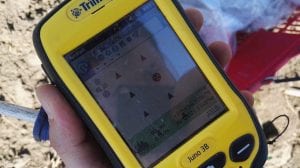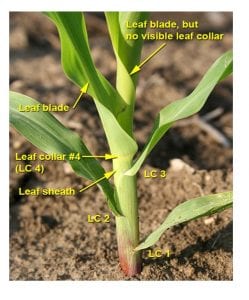Corn is an extremely important crop to agriculture in New York State and nitrogen is the most limiting nutrient. The work being done my supervisor in the Nutrient Management Spear Program is to study how added nitrogen affects corn yields. The studies are called Nrich strip trials.
In order to begin the study, fields with at least three years of yield data are selected, preferably large ones since they typically have more variability. The yield data is arranged to represent 4 different quadrants in the field.
Quadrant 1- High yielding, low variability
Quadrant 2- high yielding, high variability
Quadrant 3- Low yielding, high variability
Quadrant 4- Low yielding, low variability
A week after planting, a strip spanning the length of the field is laid out. It is where the extra nitrogen fertilizer is applied at side dress time, usually 75 lbs. more per acre. The strips are about two chopper or combine passes wide in order to draw accurate conclusions.

A quadrant map of two fields selected for this project. The gray marks indicate the area for extra nitrogen fertilizer.
Once the trial is set up, GPS points are taken in the field. The points are the locations from where the pre-side dress nitrogen test (PSNT) will be taken. A PSNT measures the amount of nitrate (NO3-) in the soil. Nitrate is an inorganic form of nitrogen that plants most readily take up. Along with the PSNT, drone images, and green seeker data is taken when there are six collard leaves on the plants, otherwise known as V6 stage. That is where I will begin my next post.

GPS points taken from the field are downloaded into Arc Map to create a map like this. The white rectangle represents the Nrich strip.


